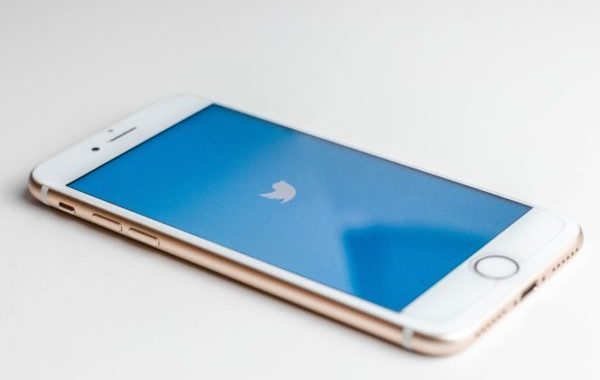
The 4 Biggest Twitter Mistakes Companies Make
With an estimated 328 million users per month as of this writing, Twitter is one of the most important social media platforms for business…and yet Twitter mistakes are all too easy to make. If you think Twitter is declining or not important, consider what happened on Twitter with United Airlines after United’s most recent fiasco. Ignore Twitter at your peril.
Surprisingly, many companies still don’t seem to know how to use Twitter effectively and waste a terrific networking and sales opportunity. So, let’s look at the four most common and biggest Twitter mistakes that companies make on twitter.
1. The Neglected Account
Having a neglected account on Twitter is like having an email address on your website that no one manages or responds to. It’s not just the twitter users — potential followers — that look at the account, but people who are researching your company will often look at your social media profiles. If someone is thinking about hiring you or buying your product or even working for you and sees this type of account, they wonder, is this business legitimate? Is this company solvent?
Here are two examples:
- The IRPAAI is an independent professional association and veritable Who’s Who in the robotic process automation community. In other words, they are a big deal. Their Twitter account has four tweets in April 2017, eight tweets in March 2017, eight tweets in February 2017, and four tweets in January 2017.
- HookedonHouses has a very successful blog and website that has had a million views, literally. Yet for whatever reason, they quit tweeting in August of 2016. This account has 12K hard-earned followers.
Not only are businesses with inactive accounts wasting networking opportunities, but on Twitter many people regularly check for and unfollow inactive accounts either manually or with the help of one of many apps. So, if you’re not actively tweeting, then you are actively hemorrhaging followers.
A good analogy is an oil well. Once drilled and producing, the oil well’s reserves are immediately being depleted. In the oil business if you are not acquiring more reserves, you are on a sinking ship. The same principle applies to Twitter: if you are not regularly tweeting and following more and more people, then your account is deteriorating.
2. The Static Account
The static account is making one of two Twitter mistakes or both of them. The account is either an auto-feed from either Facebook or Instagram or the account posts the same thing in every tweet — usually to buy some product or visit some website. These accounts are flat. Their timelines are not punctuated with any conversation with other twitterers or retweets.
Here is an example:
The French Bulldog Rescue Network is a very large 501(c)(3) nonprofit dog rescue operating in the US and Canada. They have over 325K followers on Facebook and are highly respected in the rescue community. Their Twitter account has 3,900 followers, and it is quiet since January 2016. Before January 2016, however, their timeline was an auto-feed from Instagram for a while and an auto-feed from Facebook before that. That’s why there are 3,900 followers instead of 325K. If one of your business’s social media accounts has only one percent of the following or engagement compared to another of your social media accounts, then there is something very wrong.
Your twitter account needs to be a living, breathing account. There’s nothing wrong with having an auto-feed per se. The problem lies in never checking the account manually to answer questions (@ messages) or retweet or interact with anyone. Accounts that are static like this are very obvious to an experienced twitter user, who will avoid them like the plague. No one wants to follow or do business with a robot. How do you think potential customers feel if they send you a message on Twitter and no one ever responds?
3. Incorrect Use of the @ Sign
Twitter has been around since 2006. The number of people who do not understand how the @ sign works is astonishing. You use the @ sign to send a message to someone semi-publicly or to alert them about what you’re talking about. Here’s the important part: if you start a tweet with the @ sign, the only people who see the tweet are the ones who follow you and who follow the other person (the intersecting set — people who follow both of you.) That means hardly anyone sees it.
For example, say you’re a developer of an app for book publishers, and you have a big publisher following you in your sights.
Don’t tweet this:
@bigpublisher hey we just developed a new app you might like. Wanna talk about it?
Tweet this instead:
Hey @bigpublisher we just developed a new app you might like. Wanna talk about it?
Or this:
.@bigpublisher hey, we just developed a new app you might like. Wanna talk about it?
Or this:
Hey, we just developed a new app publishers might like. Wanna talk about it? @bigpublisher
See the difference? By not starting with the @ sign, maybe you have other followers who are interested in your new app besides @bigpublisher, and they can see the message.
You should start tweets with the @ sign sparingly because if you use it often, hardly anyone sees what you’re talking about. The whole point of Twitter is to interact with others. If you have something private to say to someone, then send them a private message. Otherwise, start your tweets with any other character or characters so that all of your followers can see the conversation and participate in it. This is how you create a sense of community with your followers. Not starting tweets with the @ sign sends a signal to your followers that you want them to see what you’re tweeting, and you want to interact with them.
4. Liking Instead of Retweeting Tweets
Retweeting is everything on Twitter. If you “like” tons of tweets, but never retweet, then you’re doing it wrong. Here are the reasons why you need to retweet:
- As a business, what you want on Twitter is a lot of followers, good engagement with your followers, and lots of your material retweeted. The best way to get retweets is to retweet others. Often if you retweet something, that person whose tweet was retweeted will actively go to your account and look for something to retweet to pay you back. If you’re nice to others, they will be nice to you. If you are tweeting in a vacuum without retweeting anyone else’s material, then you appear to be narcissistic and unwilling to interact.
- Retweeting also helps your business. If, for example, someone tweets that they liked your product, run, don’t walk, to retweet it. The benefit is two-fold. You are thanking the person who said something nice about your company by circulating their name to your followers, and you are showing your followers that, hey we have a happy customer and our product is fabulous!
If you only “like” tweets, then you are signaling that you noticed the tweet, but you don’t care enough about the person who tweeted it to do them a solid and retweet it. It comes across as selfish, especially if you have many more followers than the person who gave you the compliment. It’s very simple: if you want people to like you on Twitter, then you have to retweet others.
Have you ever heard of evangelism marketing? Any customer who goes out of his or her way to compliment you should be treated like a precious jewel. You want that compliment to spread as far and wide as possible, and here’s your golden opportunity to help get that compliment circulating.
An example of a particularly well-run account is that of Virgin Mobile USA. Notice that they have 67K followers. Their timeline has tweets about business, but the feed is also punctuated with many retweets of comments to or about them. Virgin knows how to leverage their presence and influence on Twitter.
Unfortunately, many businesses seem to think that Twitter is like a giant billboard on a highway. You just post a few things about your company, and Bob’s your uncle. This is not how Twitter works.
On Twitter, you have to interact with people. You have to cultivate relationships, and especially with micro-influencers who will help you to spread your message. If you don’t know how to manage your account or don’t want to learn, then find someone who can do it for you. A terrific Twitter account doesn’t have to become a full-time job. Spending half an hour per day nurturing your account will make a world of difference. Just don’t have an account on Twitter that is mismanaged because that’s worse than having no account at all. Avoid these four Twitter mistakes, and you will be on your way to an effective and profitable Twitter experience.
Author Bio:
Cynthia White is a freelance writer, editor, marketing consultant, and Twitter expert. She lives on Vancouver Island with her husband and two bulldogs and is @dearcynthia on Twitter, where you can find her night and day.



